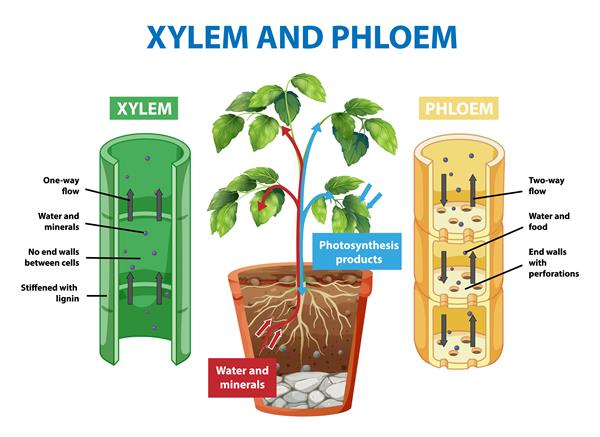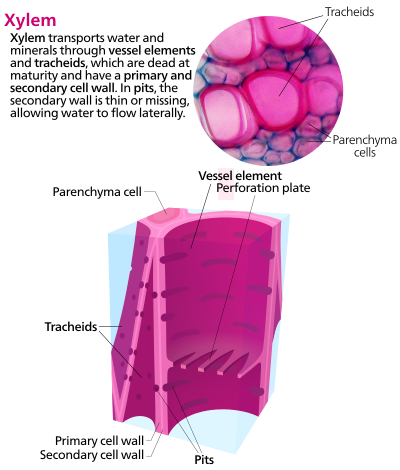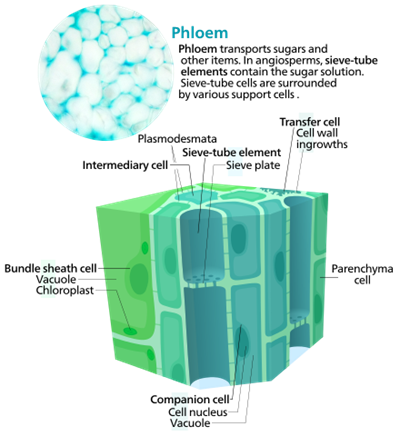PDF chapter test TRY NOW
As discussed in our earlier classes, we know that organisms with millions of cells are multicellular organisms. Every cell of these organisms requires a constant supply of essential substances like nutrients and oxygen to maintain life and survival. These important substances, known as nutrients, are the only source of energy. From the topic of Plant physiology, we know that every cell obtains its energy by cellular respiration in which glucose is broken down. This energy liberated as ATP is used by the cells to perform all the various vital functions of the cell.
Transportation in plants:
We have already looked at how plants take in essential nutrients like CO_2 and store photosynthetic energy in their chlorophyll-containing organs, such as leaves. However, other types of raw materials required to construct plant bodies will have to be procured individually.
All other raw materials, such as nitrogen and phosphorus, should be extracted from the soil, their closest and most abundant nutrient source. These compounds are absorbed by the roots and transported to the leaves and other plant sections for important functions, including photosynthesis and cellular respiration.
All other raw materials, such as nitrogen and phosphorus, should be extracted from the soil, their closest and most abundant nutrient source. These compounds are absorbed by the roots and transported to the leaves and other plant sections for important functions, including photosynthesis and cellular respiration.
But have you ever thought about how these compounds make their way from the roots to their final destination? Let us see how.
What is transportation?
The process involving the movement of water and nutrients throughout the plant for its survival is known as transportation.
Similar to animals, transportation is a vital process in plants. Unlike animals, plants lack both interstitial fluid and a circulatory system for the transport of nutrients. But still, we can observe the movement of various substances not only to short distances but also to very long distances (from roots to chlorophyll-containing leaves).
The vascular system of plants:
The water absorbed by the roots and the food synthesised by the leaves has to be distributed to all the parts of the plants. To know that how this occur recall plant anatomy. From that topic, we have learnt that tissues associated with the conduction of water, minerals and food materials in plants are called vascular tissue.

Transportation in plants by vascular tissues
The water, minerals and salts absorbed by the roots of the plants reach all the parts of the plant by the vascular tissue xylem.

Xylem
The food produced in the leaves of the plants is translocated to the other parts of the plant through the phloem.

Phloem
The bulk movement of substances through the vascular tissue is called translocation.
Reference:
https://www.freepik.com/free-vector/diagram-showing-xylem-phloem-plant_13225464.htm?query=transportation%20in%20plants
